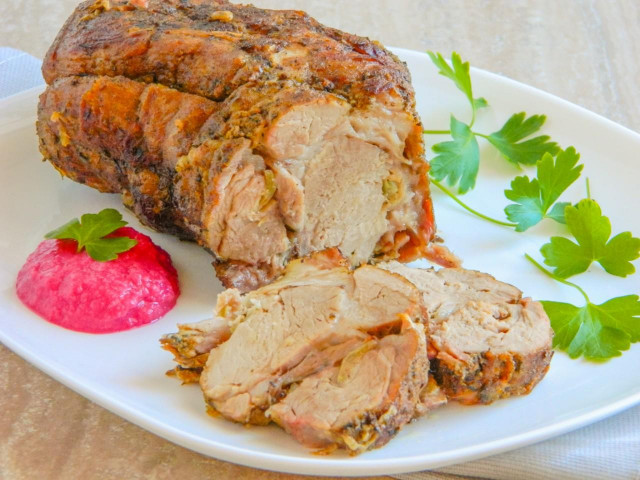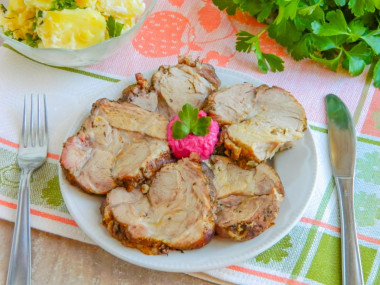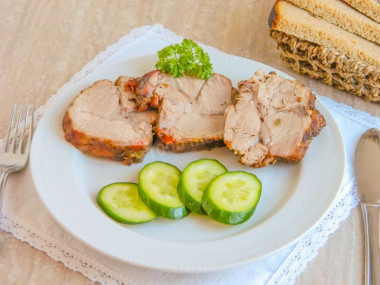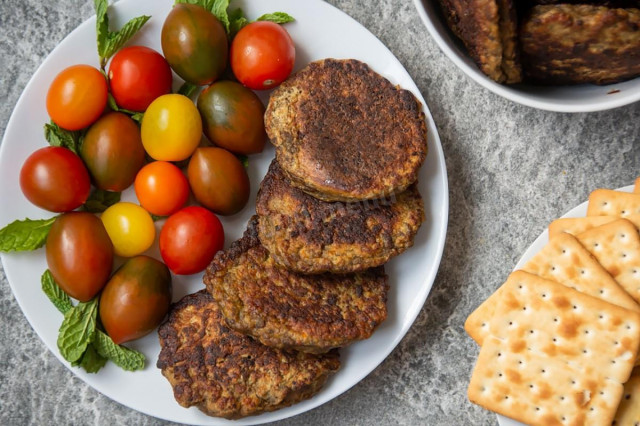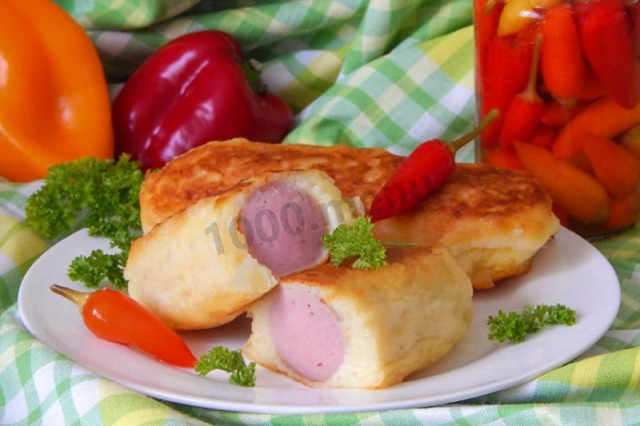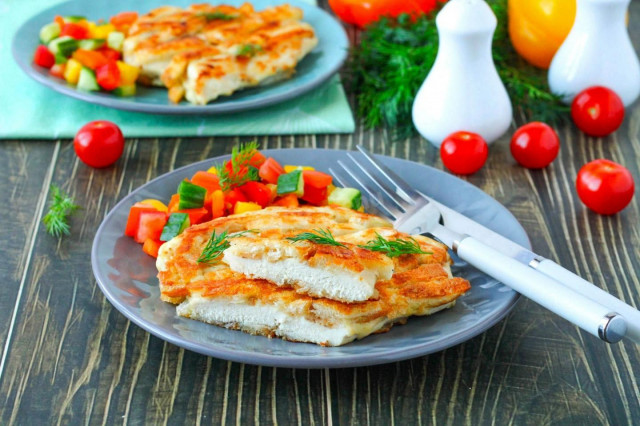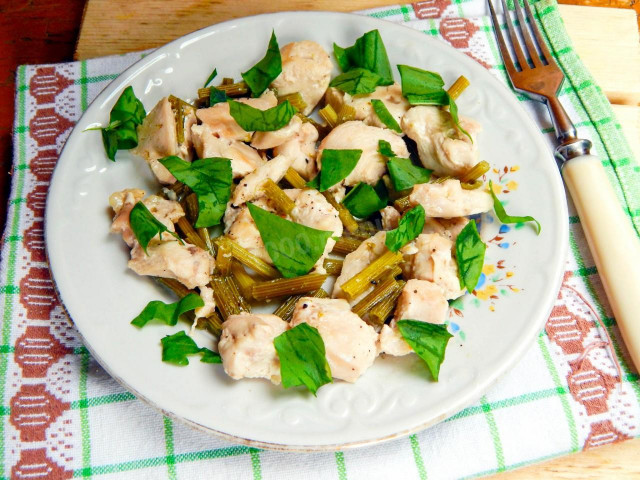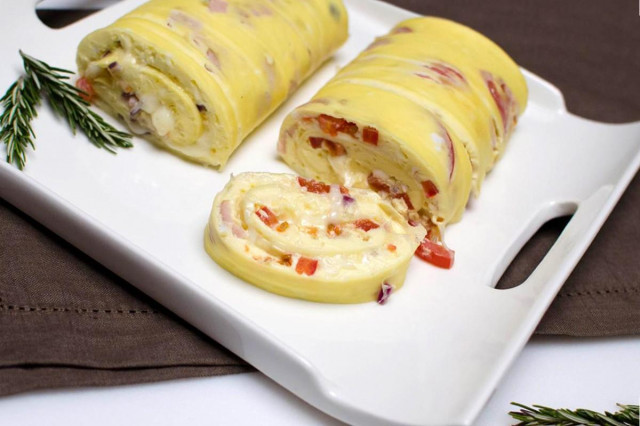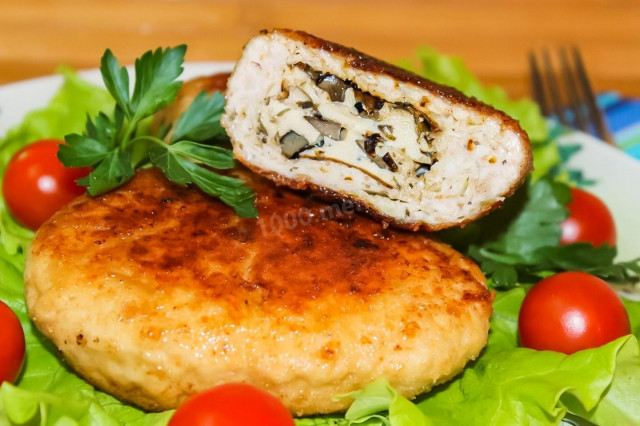Composition / ingredients
Step-by-step cooking
Step 1:
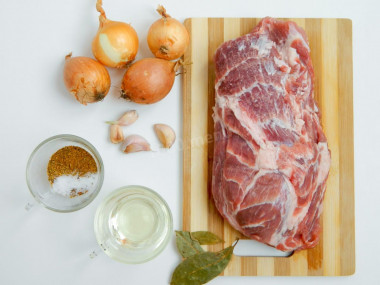
Prepare all the necessary products from the list. Choose the meat very carefully. If you take low-quality meat, you will certainly spoil the taste of the finished dish. The neck should be pink in color with thin white veins of fat, without an intrusive smell and excessive shine. It will taste better from fresh meat, but if you have a frozen neck, it must be thawed beforehand - leave it in a container in the refrigerator for 8 hours. Take refined oil.
Step 2:
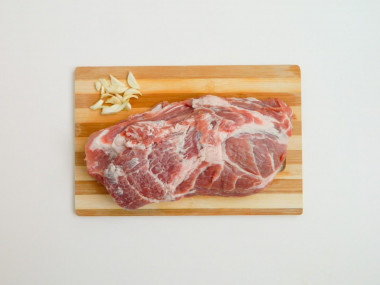
Wash and dry the meat with paper towels so that there are fewer splashes when frying. Peel the garlic, rinse and cut into strips. So it will be easier to stuff them with meat.
Step 3:
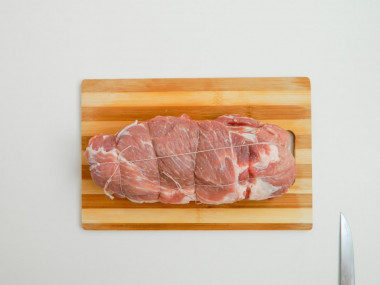
Stuff the neck with garlic so that the meat is evenly soaked with the aroma of garlic. If you do not have a special scupper knife, you can use a knife with a long sharp blade. Pierce the meat along the fibers (so that the garlic is cut across when slicing) and move the pieces of garlic along the blade deep into the piece of meat. Tie the meat lengthwise and crosswise with a thick cotton thread so that the piece is denser and does not fall apart during cooking.
Step 4:
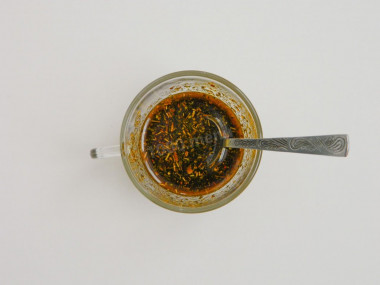
Mix all the loose spices with salt and 4 tablespoons of oil. This marinade evenly distributes the taste and aroma of spices throughout the meat. The remaining oil will be useful to us later.
Step 5:
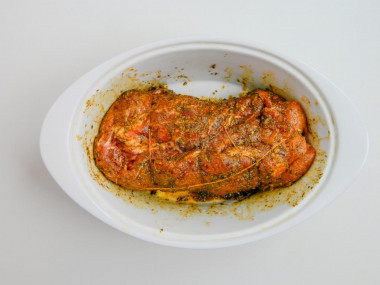
Take a form for marinating meat, in which it will fit freely. The material from which it is made should not be oxidized. Enameled, ceramic and glassware are ideal. I took a ceramic duckling. Thoroughly rub the meat on all sides with marinade.
Step 6:
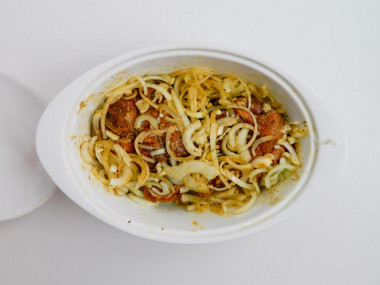
Wash the onion, cut it into half rings and lightly remember to make it easier to give the juice. Wrap the meat on all sides with chopped onions. Cover with a lid or cling film and leave to marinate for 3-4 hours at room temperature. You can leave it for a longer period, for example, overnight. Then it is better to put it in the refrigerator. To make the meat better marinated in the process of marinating a couple of times, "stir" the meat - turn it over to the other side and re-mash with onions.
Step 7:
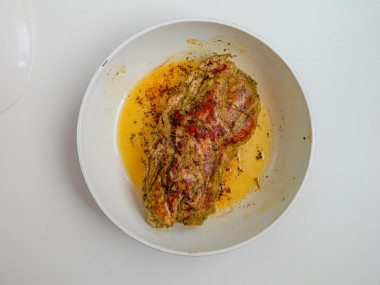
Peel the marinated meat from the onion and fry in a frying pan greased with vegetable oil on all sides over high heat to get a toasted crust. So the finished neck will retain juiciness. For frying, use a large frying pan with high walls so that it is convenient to turn the meat over and less oil splashes fly out. It is convenient to turn it over with tongs or two blades, clamping the meat between them.
Step 8:
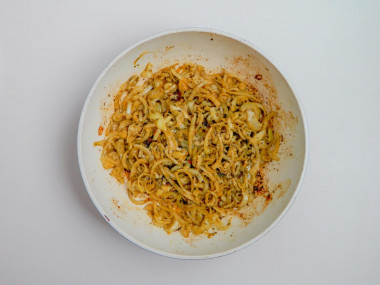
In the same oil, lightly fry the onion in which the meat was marinated. Toasted onions will give a richer taste to baked meat. Fry the onion over medium heat so that it does not burn and does not become bitter.
Step 9:
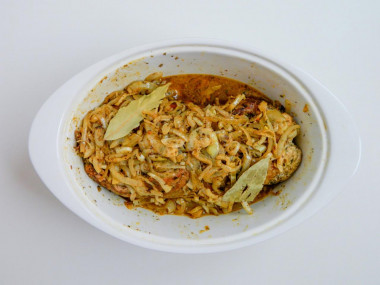
Take a deep baking dish with a lid so that the meat fits freely in it and lies without breaks. I take the same duck house in which I pickled. Lower the meat there and cover with onions from all sides. Add the bay leaves and half a cup of warm water. The water will not allow the meat to dry out if all the moisture evaporates. Meat can be very different - too fat or dry - and it is impossible to predict exactly how it will behave.
Step 10:
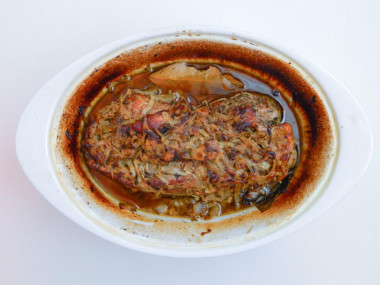
Cover and bake for 1.5 hours in a preheated oven at 180 ° C. Since everyone has different ovens and baking dishes, the cooking time may vary. After an hour, carefully open the lid and check - the meat should be browned, but not burnt. When ready, remove from the oven, remove the lid and leave to cool for 30-40 minutes without draining the liquid. Peel the finished baked neck from the onion and cut the threads.
Baked pork neck can be served both warm and cold. It goes well with vegetables and herbs. The meat is obtained with a beautiful cut and a ruddy crust. No refined ham will replace the taste of natural baked pork.
A neck cooked according to this recipe will perfectly fit into your family's daily diet, and will also easily decorate any festive table.
You can store a baked neck in the refrigerator for up to 2 days.
Caloric content of the products possible in the composition of the dish
- Garlic - 143 kcal/100g
- Bay leaf - 313 kcal/100g
- Ground black pepper - 255 kcal/100g
- Thyme - 101 kcal/100g
- Dried thyme - 276 kcal/100g
- Thyme - 276 kcal/100g
- Vegetable oil - 873 kcal/100g
- Salt - 0 kcal/100g
- Water - 0 kcal/100g
- Onion - 41 kcal/100g
- Ground red pepper - 318 kcal/100g
- Paprika - 289 kcal/100g
- Allspice - 263 kcal/100g
- Marjoram dry - 271 kcal/100g
- Pork neck - 343 kcal/100g

